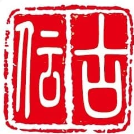should be this:
YOSHIKUNI (吉国), Kanbun (寛文, 1661-1673), Tosa – “Kōzuke no Kami Yoshikuni” (上野守吉国), “Kōzuke no Daijō Yoshikuni” (上野大掾吉国), “Settsu-jū Yoshikuni” (摂津住吉国), real name Morishita Magobei (森下孫兵衛), son of Harima no Kami Yoshinari (播磨守吉成) and older brother of Mutsu no Kami Yoshiyuki (陸奥守吉行), he studied under the 1st gen. Yamato no Kami Yoshimichi (大和守吉道), he lived in Kyōto´s Fushimi-Ryōgae-machi (伏見両替町) and later in Tosa´s Kusaka-mura (日下村), he came originally from Nakamura (中村) in Ōshū province, he worked in the style of his master Yoshimichi, the jigane is an itame mixed with masame, the hamon is a gunome-midare, partially mixed with sudareba, and has a sugu-yakidashi, wazamono, chūjō-saku
A papered example here https://katananokura.jp/SHOP/1810-W03.html#:~:text=摂津住吉国(上野守,として活躍しています。



